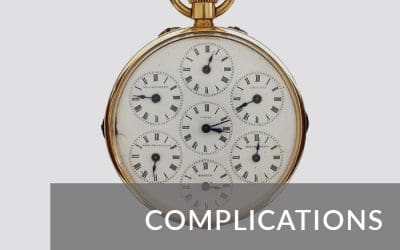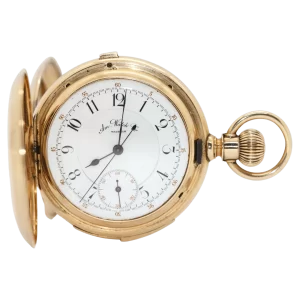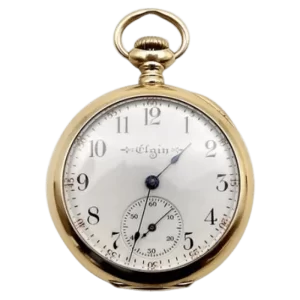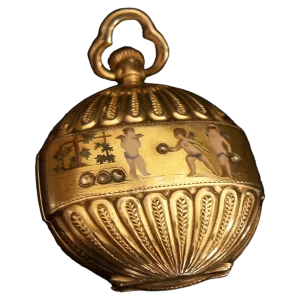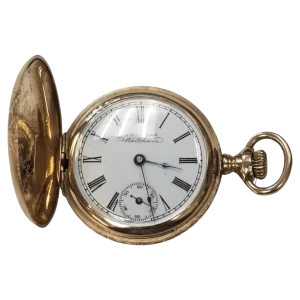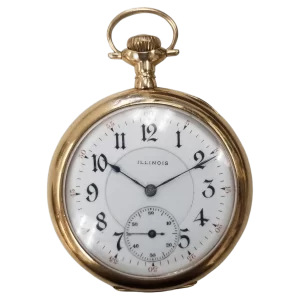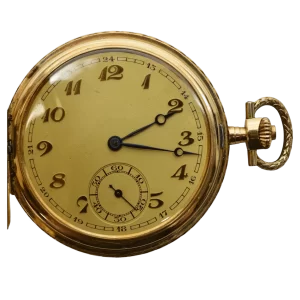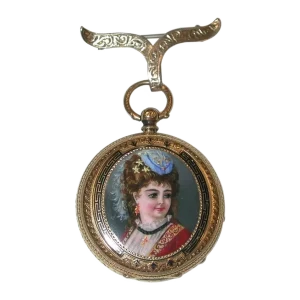For centuries, humanity has been fascinated by the moon and its ever-changing phases. From ancient civilizations using lunar cycles to track time and predict natural events, to modern astronomers studying its impact on tides and the Earth’s rotation, the moon has played a significant role in shaping our understanding of the world and beyond. This fascination has also translated into the world of timekeeping, with the invention of moon phase pocket watches. These unique timepieces not only serve as a functional tool for tracking time, but also offer a glimpse into the rich history and cultural significance of the moon. In this article, we will delve into the world of moon phase pocket watches, exploring their origins, evolution, and functionality. We will also discuss their enduring appeal and how they continue to capture the imagination of watch enthusiasts and collectors alike. So, let us embark on a journey through time as we discover the fascinating history and functionality of moon phase pocket watches.
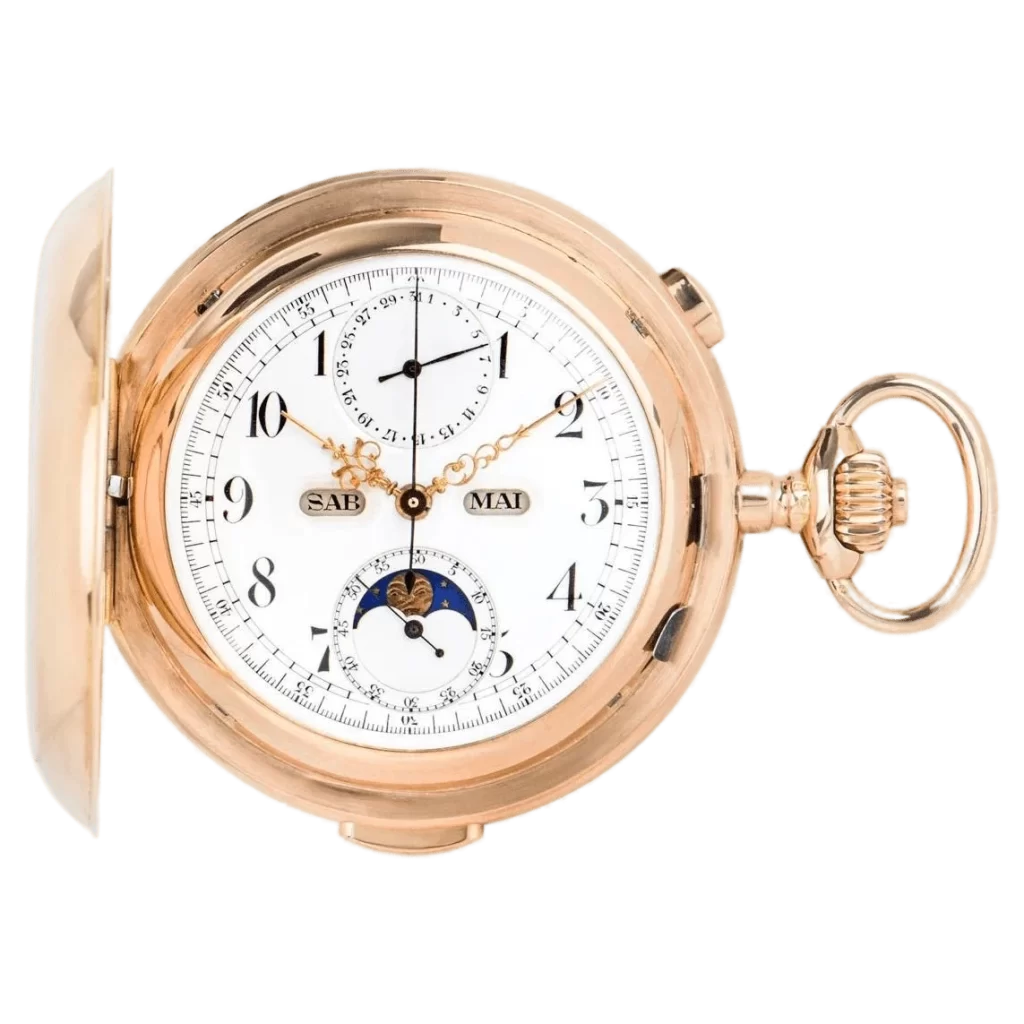
Ancient timekeeping tool with modern charm
One cannot deny the allure of ancient timekeeping tools, especially when they seamlessly blend with modern aesthetics. Moon phase pocket watches perfectly embody this combination of history and functionality, captivating watch enthusiasts and collectors alike. These exquisite timepieces not only serve as elegant accessories, but also offer a glimpse into the celestial movements of the moon. With intricate dials and precise mechanisms, moon phase pocket watches provide a unique and enchanting way to keep track of time while adding a touch of sophistication to any attire. Whether it is the intricate craftsmanship or the mesmerizing display of lunar phases, these timepieces continue to fascinate and inspire, making them a sought-after choice among those who appreciate the fusion of ancient traditions with contemporary design.
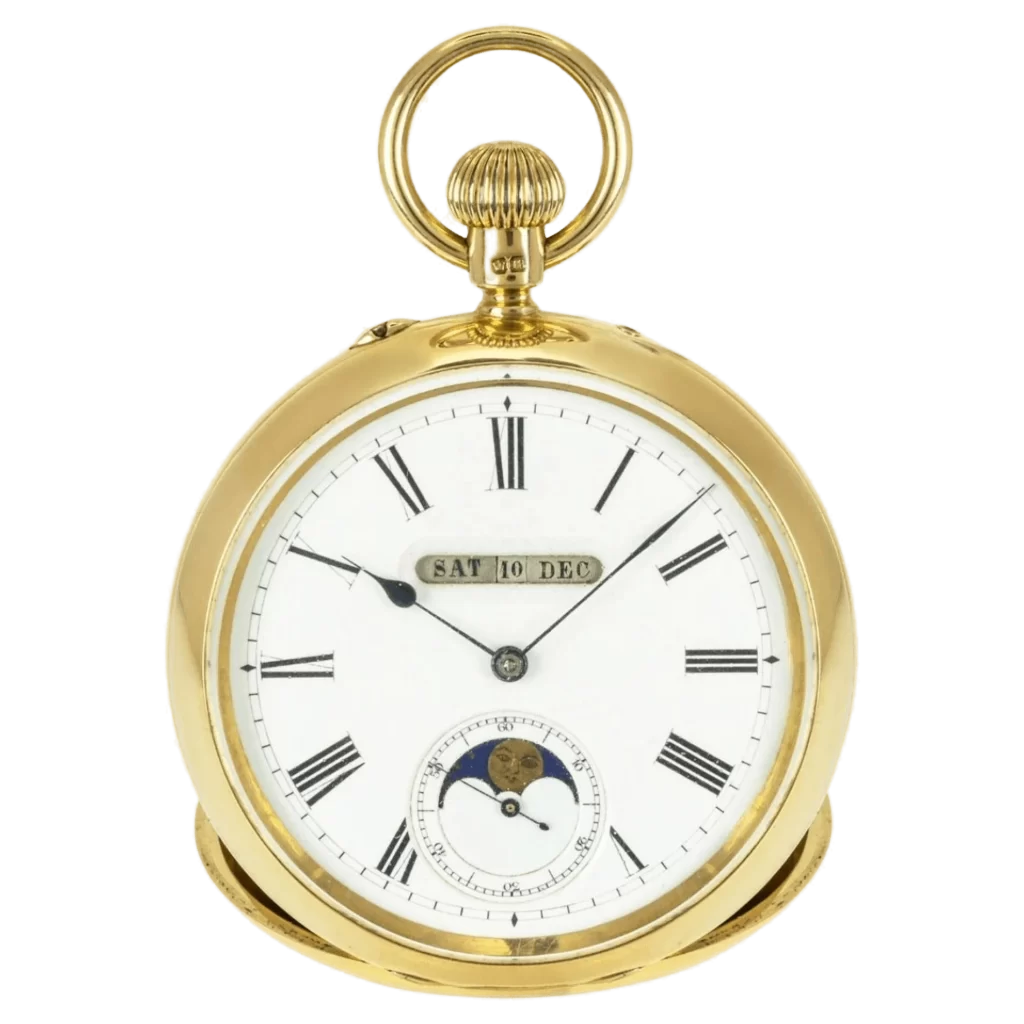
Tracing moon cycles through history
Throughout civilization, the moon has held a significant place in human observation and understanding. Tracing moon cycles through history unveils not only our ancestors’ fascination with the celestial body but also their deep connection to its rhythms. From ancient civilizations like the Mayans and Egyptians who worshipped lunar deities to the development of sophisticated calendars and astronomical tools, humans have endeavored to comprehend the patterns and influences of the moon’s phases. The study of moon cycles has not only shaped religious and cultural practices but has also played a crucial role in agriculture, navigation, and even determining the passage of time. By examining the rich history of moon observation, we gain a deeper appreciation for the timeless allure of moon phase pocket watches and their embodiment of this enduring fascination with celestial bodies.

Early lunar-inspired timepieces discovered
Throughout the course of horological history, researchers and collectors have unearthed a fascinating array of early lunar-inspired timepieces. These exquisite timepieces, ranging from pocket watches to wristwatches, showcase the ingenuity and craftsmanship of their respective eras. The intricate moon phase complications found in these timepieces not only serve as a testament to humanity’s longstanding fascination with the moon but also highlight the technical advancements achieved by watchmakers. The discovery of these early lunar-inspired timepieces provides invaluable insights into the evolution of timekeeping and the enduring appeal of celestial-inspired horology. As we delve into the world of moon phase pocket watches, we uncover a captivating chapter in the broader narrative of the intersection between timekeeping and lunar observation.
Influence of astrology on design
Astrology, with its ancient origins and enduring influence, has seeped into various aspects of human culture, including the realm of design. Its impact on design can be seen in the incorporation of celestial motifs, use of color schemes inspired by zodiac signs, and the creation of products that cater to astrology enthusiasts. Designers often draw inspiration from astrological symbols and elements, infusing them into their creations to evoke a sense of wonder and mystique. The allure of astrology lies in its ability to tap into deeply rooted beliefs and emotions, making it an intriguing source of inspiration for designers seeking to create products that resonate with individuals on a personal and spiritual level. From jewelry adorned with zodiac signs to decorative items depicting planetary alignments, the influence of astrology on design adds an ethereal touch to the aesthetic landscape, captivating both believers and appreciators of artistic expression alike.
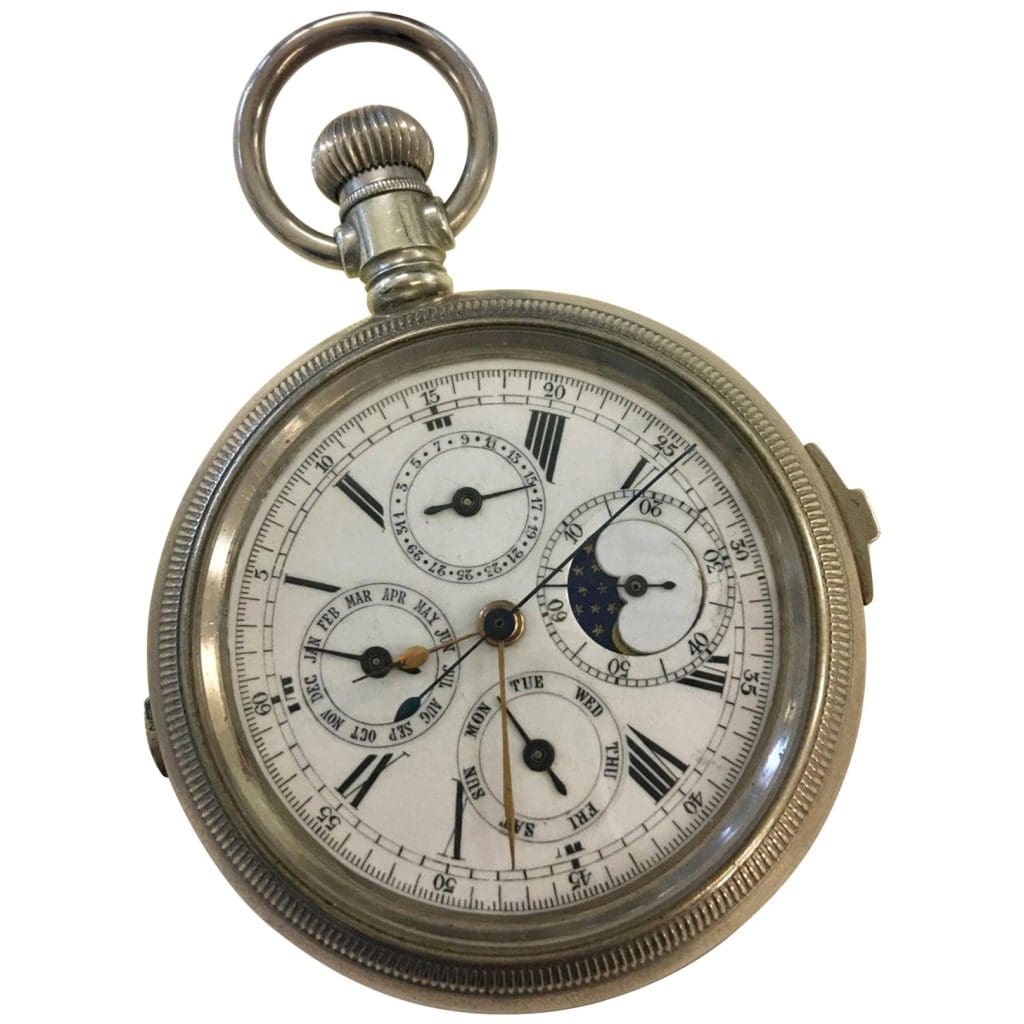
Practical use for sailors’ navigation
Sailors throughout history have relied on various tools and techniques for navigation, ensuring safe passage across vast and unpredictable oceans. One practical use for sailors’ navigation is the ability to determine their position and course using celestial bodies such as the sun, moon, and stars. By observing the position and movement of these celestial objects, sailors can calculate their latitude and longitude, allowing them to plot their course and stay on track during long voyages. In particular, the moon plays a crucial role in providing valuable information for sailors. Its predictable phases and movements can be used to determine the time, tides, and approximate direction, aiding sailors in their navigation efforts. This practical use of celestial navigation has been instrumental in guiding sailors safely to their destinations, even in the absence of modern navigation technology.
How moon phase display works
Moon phase display is a fascinating feature found in some pocket watches that showcases the current phase of the moon. This display works based on the lunar cycle, which lasts approximately 29.5 days. The mechanism behind the moon phase display involves a series of gears and discs that mimic the actual movement of the moon in the sky. The gears are carefully calibrated to rotate at a specific speed, corresponding to the lunar cycle, creating an accurate representation of the moon’s phase. The display typically consists of a small aperture on the watch dial with a disc underneath, displaying different moon phases, such as new moon, first quarter, full moon, and last quarter. As time passes, the gears progress the disc, indicating the current phase of the moon. This intricate mechanism not only adds a touch of elegance to pocket watches but also serves as a practical tool for those who rely on the moon’s phases for various purposes, such as planning outdoor activities or tracking celestial events.

Accuracy and maintenance considerations
When it comes to moon phase pocket watches, accuracy and maintenance considerations play a crucial role in ensuring the longevity and functionality of these timepieces. Accuracy is highly valued in timekeeping, and moon phase displays are no exception. To maintain accuracy, manufacturers employ precision engineering and calibration techniques, ensuring that the gears and discs responsible for displaying the moon’s phase are finely tuned. However, it is important to note that minor deviations may occur over time due to factors such as temperature changes, gravitational forces, and wear and tear. Therefore, periodic maintenance and adjustment by a skilled watchmaker are recommended to keep the moon phase display accurate. Additionally, regular servicing of the watch, including cleaning, lubrication, and inspection of the movement, will help preserve its overall performance and extend its lifespan. By carefully considering accuracy and maintenance, owners of moon phase pocket watches can continue to appreciate the beauty and functionality of these remarkable timepieces.
Symbolism and significance in culture
Symbolism and significance in culture are essential aspects of any form of art or object, and moon phase pocket watches are no exception. These exquisite timepieces hold a deep symbolic meaning that resonates with individuals and societies alike. The moon, with its ever-changing phases, has captivated human imagination for centuries, representing a vast array of concepts and emotions. In many cultures, the moon is associated with femininity, intuition, and the cyclical nature of life. The different phases of the moon, from the waxing crescent to the waning gibbous, symbolize growth, transformation, and the rhythm of time. Owning a moon phase pocket watch not only signifies an appreciation for horological craftsmanship but also carries with it a sense of connection to the celestial and a nod to the rich cultural tapestry that has woven the moon’s symbolism throughout history.
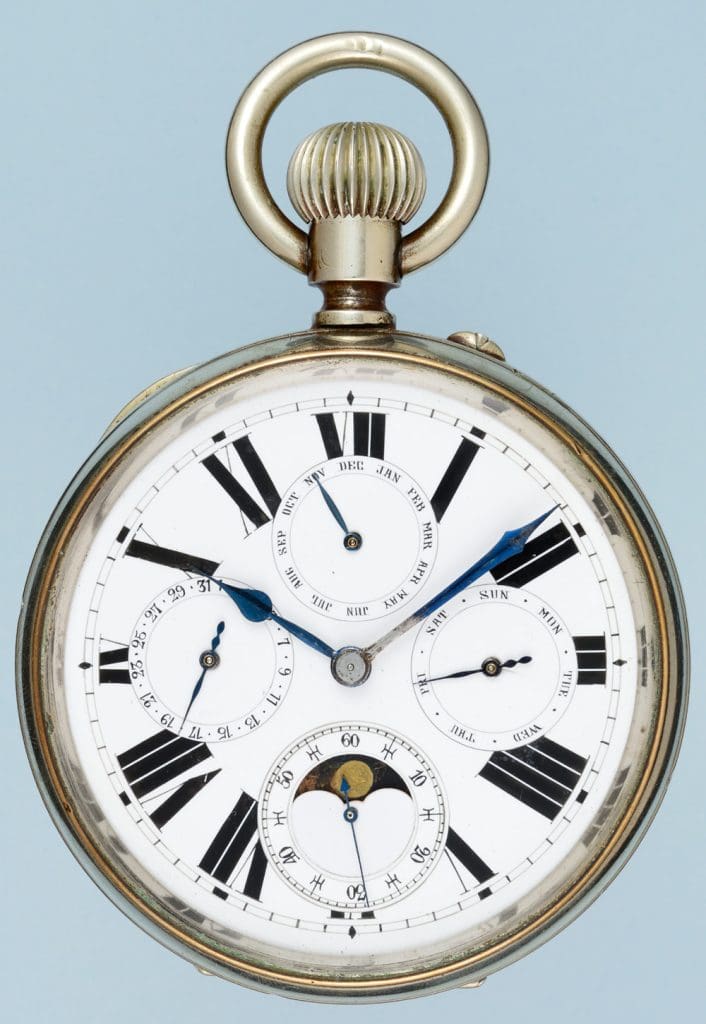
Revival of popularity in fashion
In recent years, there has been a notable revival of popularity in fashion, with designers and trendsetters rediscovering the charm and allure of vintage and classic styles. This resurgence has extended to accessories, with moon phase pocket watches making a triumphant return to the forefront of fashion. These timepieces, once considered a relic of the past, have found a new audience captivated by their elegant design and timeless appeal. Fashion-conscious individuals are embracing these watches as statement pieces, adding a touch of sophistication and nostalgia to their ensembles. The unique combination of functionality and fashion makes moon phase pocket watches a must-have accessory for those seeking to make a stylish statement while appreciating the artistry and heritage of horology. As these watches continue to regain popularity, we can expect to see them gracing the wrists of fashion icons and enthusiasts, solidifying their position as a sought-after fashion accessory in the years to come.
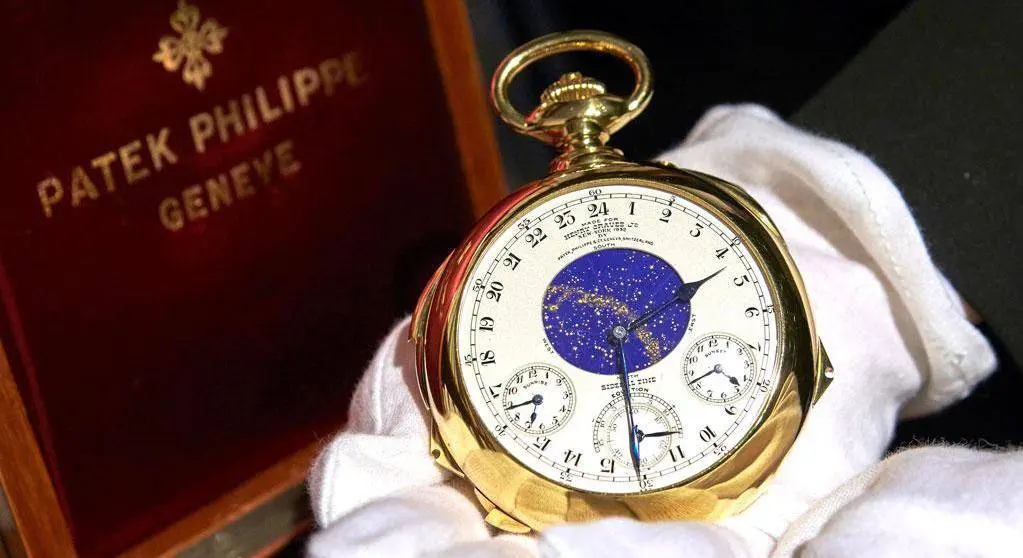
In conclusion, moon phase pocket watches have a rich history dating back to the 17th century and have continued to evolve in design and functionality. While they may no longer be a practical timekeeping device, they still hold a special place in the hearts of collectors and enthusiasts alike. With their intricate moon phase displays and elegant designs, these watches serve as a reminder of the beauty and wonder of our universe. Whether used as a fashion statement or a nod to the past, moon phase pocket watches are a timeless accessory that will continue to capture the imagination for generations to come.
FAQ
What is the history behind moon phase pocket watches and when were they first introduced?
Moon phase pocket watches were first introduced in the 19th century as a way to track the phases of the moon for various purposes such as agriculture, navigation, and astrology. These watches featured a small disk displaying the lunar phases as they change throughout the month. They became popular among sailors, farmers, and astronomers for their practicality and accuracy in tracking celestial events. The design of these watches has evolved over time, with modern versions still being produced today for their historical charm and functionality.
How do moon phase pocket watches accurately track the phases of the moon?
Moon phase pocket watches track the phases of the moon through a gear mechanism that rotates a disc with two identical moons on it. As the disc turns, the position of the moons shifts, mimicking the actual phases of the moon in the sky. By setting the watch to the current moon phase, the wearer can then track the progression of the moon through its various phases as the watch continues to operate.
What features set moon phase pocket watches apart from traditional pocket watches?
Moon phase pocket watches feature an additional complication that displays the current phase of the moon, typically with a small aperture on the watch face. This feature adds a unique aesthetic appeal and functionality to the watch, allowing the wearer to track the lunar cycle in addition to telling time. Traditional pocket watches, on the other hand, typically focus solely on timekeeping without this additional lunar phase display. The inclusion of the moon phase complication sets these watches apart by adding a touch of elegance and sophistication to their design.
Are moon phase pocket watches still popular today, and if so, why?
Moon phase pocket watches are not as popular today as they once were, largely due to advancements in technology and the prevalence of digital devices that provide accurate timekeeping. However, they still hold appeal among collectors, vintage enthusiasts, and those who appreciate the artistry and craftsmanship of traditional timepieces. The intricate design and celestial symbolism of moon phase watches continue to attract a niche audience seeking a unique and timeless accessory that reflects a connection to nature and history. Despite their decreased popularity, moon phase pocket watches remain a cherished and sought-after item in the horology world.
How do collectors value moon phase pocket watches compared to other types of timepieces?
Collectors often value moon phase pocket watches highly due to their intricate design, historical significance, and rarity. These timepieces are considered prized possessions because of their unique complication and connection to celestial movements. Compared to other types of timepieces, moon phase pocket watches are often seen as more collectible and sought after, fetching higher prices at auctions and among collectors due to their craftsmanship and charm. The intricate mechanism required to display the phases of the moon adds to their allure and makes them a prized addition to any collection.

